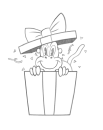Check out the premium course for additional lessons, demos, assignments and critiques!
Eye Level and the Horizon Line
When drawing in perspective, choose your viewer's eye level, which is the same as the horizon line. This line sets your viewpoint height, and it affects all other lines in your drawing.
Receding Lines: Up Views and Down Views
Use three sets of lines for the spatial axes. When receding lines aim up, you're looking down at the object, and when they aim down, you're looking up.
Remember:
- Looking down, lines go up
- Looking up, lines go down
Vanishing Points and Perspective Types
- One-Point Perspective: One set of lines recedes to a single point.
- Two-Point Perspective: Two sets of lines recede to two points.
- Three-Point Perspective: Vertical lines tilt and recede to a third point.
Vertical lines parallel to the picture plane don't need a vanishing point. In three-point perspective, artists often adjust the third point for effect.
Focus on Spatial Axes
Understanding the three spatial axes, width, height, and depth, is more important than labeling perspectives. Know how lines recede and converge, and accurately depict forms.
Foreshortening and Angles
As objects approach eye level, their top and bottom planes foreshorten, and angles change:
- Angles on Paper: Corners shift from acute to obtuse angles.
- Position Changes: Objects compress into lines when aligned with your eye level.
Practice Drawing
- Draw rooms with the eye level centered.
- Start with 5-minute sketches, then reduce to 3 minutes, then 1 minute.
- Observe how lines converge toward vanishing points on the horizon.
The Picture Plane
Understanding the picture plane explains foreshortening. As objects align with your eye, they compress. This concept solves many perspective problems.
Check out the premium course for additional lessons, demos, assignments and critiques!



